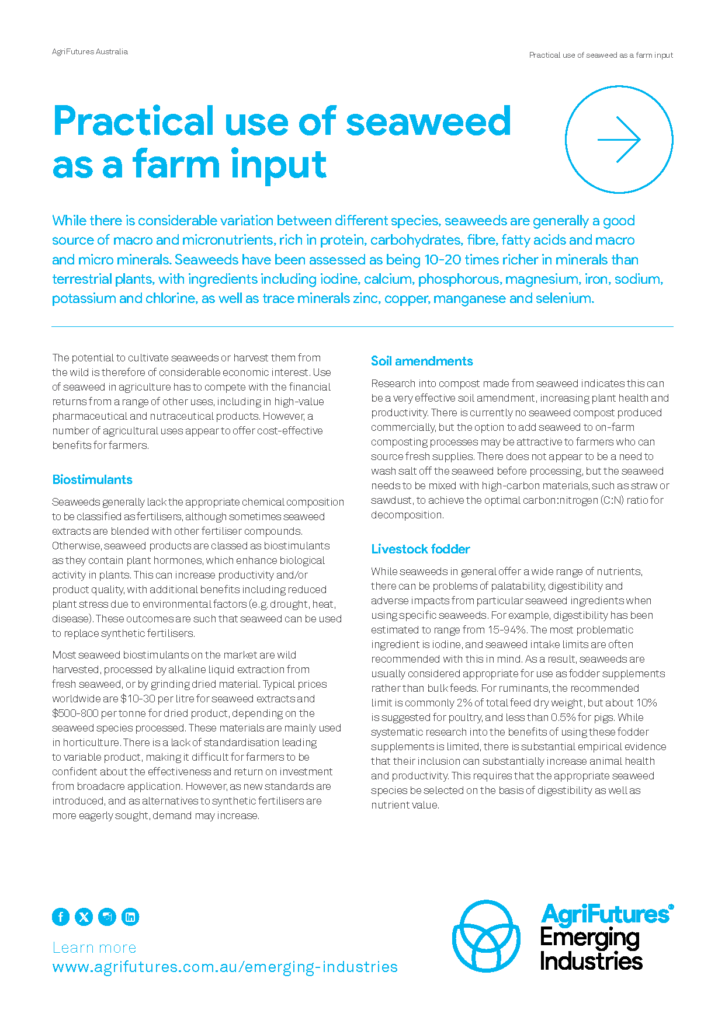Biosecurity for the Australian seaweed industry
The Australian seaweed industry has a vision to be a $1.5 billion industry by 2040, driven by increasing demand for sustainable food, bioactive compounds and...
 SEAWEED AND ALGAE
SEAWEED AND ALGAE 
5 pages
Published: 4 Mar 2024
Author(s): Jane Stanley
Download report PDF
DownloadWhile there is considerable variation between different species, seaweeds are generally a good source of macro and micronutrients, rich in protein, carbohydrates, fibre, fatty acids and macro and micro minerals. Seaweeds have been assessed as being 10-20 times richer in minerals than terrestrial plants, with ingredients including iodine, calcium, phosphorous, magnesium, iron, sodium, potassium and chlorine, as well as trace minerals zinc, copper, manganese and selenium.
The potential to cultivate seaweeds or harvest them from the wild is therefore of considerable economic interest. Use of seaweed in agriculture has to compete with the financial returns from a range of other uses, including in high-value pharmaceutical and nutraceutical products. However, a number of agricultural uses appear to offer cost-effective benefits for farmers.